Big Bend Spring - New Places and Familiar Spaces
Big Bend National Park is one of my favorite places in Texas. I try to make the drive out here several times a year to experience the remoteness, the quiet, and the mystery of what this special place offers. And this past Spring, Big Bend Bluebonnets called to me, or so I thought. In good year, mid-February to mid-March brings on the advent of this special species of the Texas state flower. These blooms show up much earlier in the season, unlike their cousins in the Hill Country that show up in mid-to-late March. So I made the 7.5 hour drive from my home in Drip and crashed at a friend’s comfy but spartan room in the Chisos Lodge.
As I made the 26-mile drive from the visitor entrance north of the mountains to Panther Junction. I could already tell the bluebonnets didn’t have much hope of putting on a show. The few that I saw along the road were dried and small. I remembered nostalgically about the superbloom of 2019 and how rivers of blue and purple blooms seemed to flow down from the eastern and western slopes of these ancient mountains. Those rivers were all dried up this year. I’ve had folks tell me since this trip that 1)I went at the wrong time (No, I did not) or 2) they saw lots of bluebonnets on their trip around the same time (there were some along the roadsides). That said, I think I have different expectations and different requirements as a landscape photographer. I’ll leave it at that.
So… lack of bluebonnets? No big deal. Big Bend covers 801,000+ acres and has plenty of places to visit, both along popular hikes and lesser-known trails. For this trip, though unplanned, my friend and I covered five areas in this order:
1 – Santa Elena Canyon (sunset)
2 – Balanced Rock (for the Milky Way and sunrise)
3 – Indian Head Trail (for sunset and again for sunrise and the Milky Way the next morning)
4 – Tornillo Flats/Wash (sunset)
5 – Lone Mountain (sunrise)
I met up with my friend, Greg, after the long drive and we headed to the Chisos Lodge restaurant for a quick late lunch. Over an acceptable burger, we made some plans and soon after headed out. Though a seasoned world traveler and excellent photographer, Greg hadn’t been to Big Bend. We took the scenic Ross Maxwell drive west, stopping on one spot near Goat Mountain in hopes of locating an off-trail particular view of this across the valley. No luck. After sweating for an hour or so hunting for this view, we headed over to the Mule Ears’ overlook, then took in the colors of red and white rock not far from Cerro Castellan.
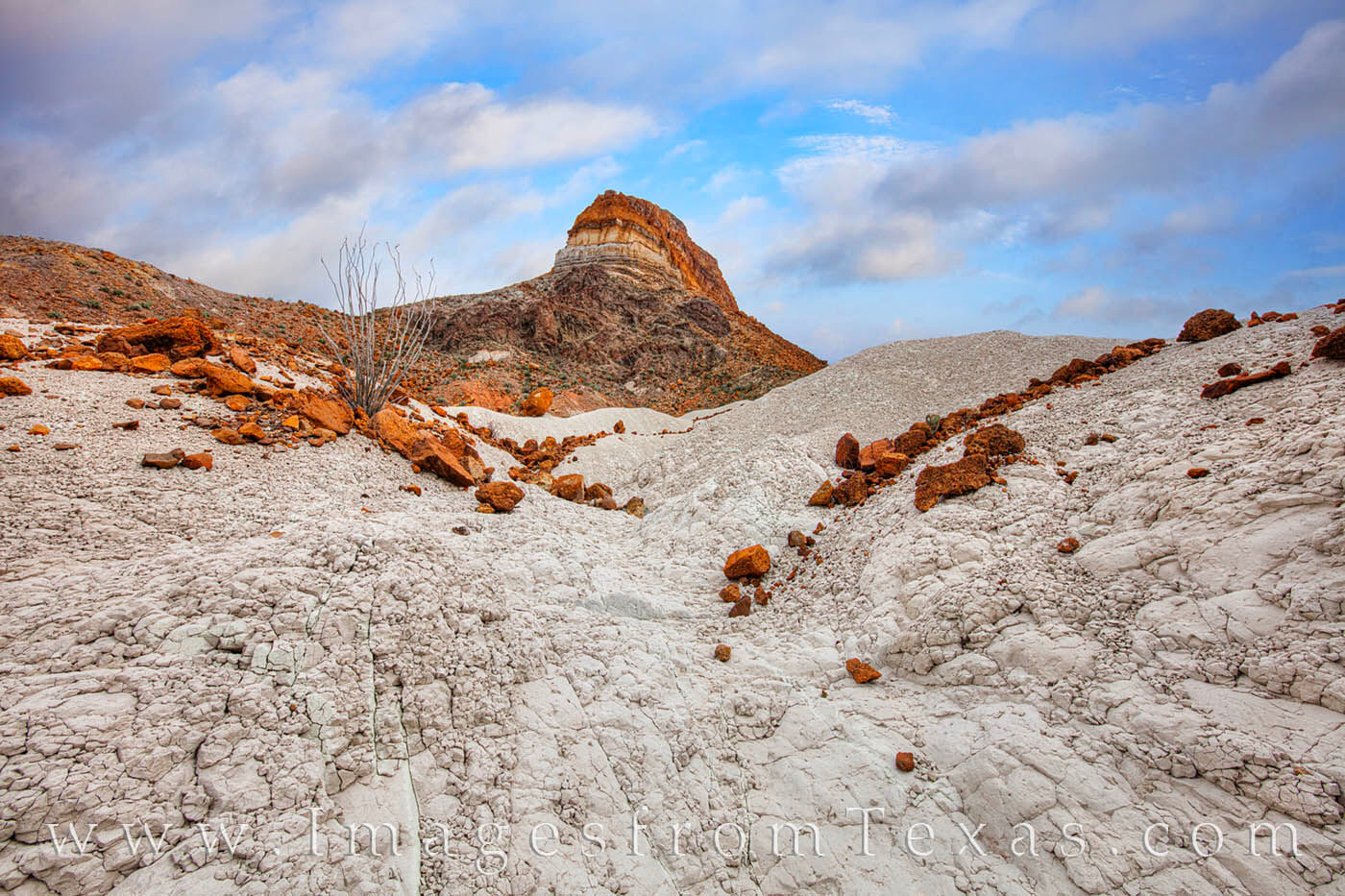
Volcanic tuff rests at the bottom of Cerro Castellan along the Ross Maxwell Scenic Drive. The contrast in the white and red rock and even blue skies made for a beautiful scene.
The original plan was to hike the Indian Head Trail to scout it for sunrise, but at our Santa Elena stop, Greg got swept up in the view, hiked the .7 miles of trail into the canyon, and lost track of time. While at first I was disappointed, the light shining into the canyon was beautiful and something I’d not experienced in the past. Admittedly, I think the best hour of light here is sunrise (and still do), but the last rays of sunshine as they lit up the south canyon wall offered a unique perspective, so I’m glad we stayed just a little longer. I think of Santa Elena Canyon as the low hanging fruit – the place where folks stop for a quick Instagram shot – and move on. I still do, but these places are popular for a reason – easy access and rare majesty.
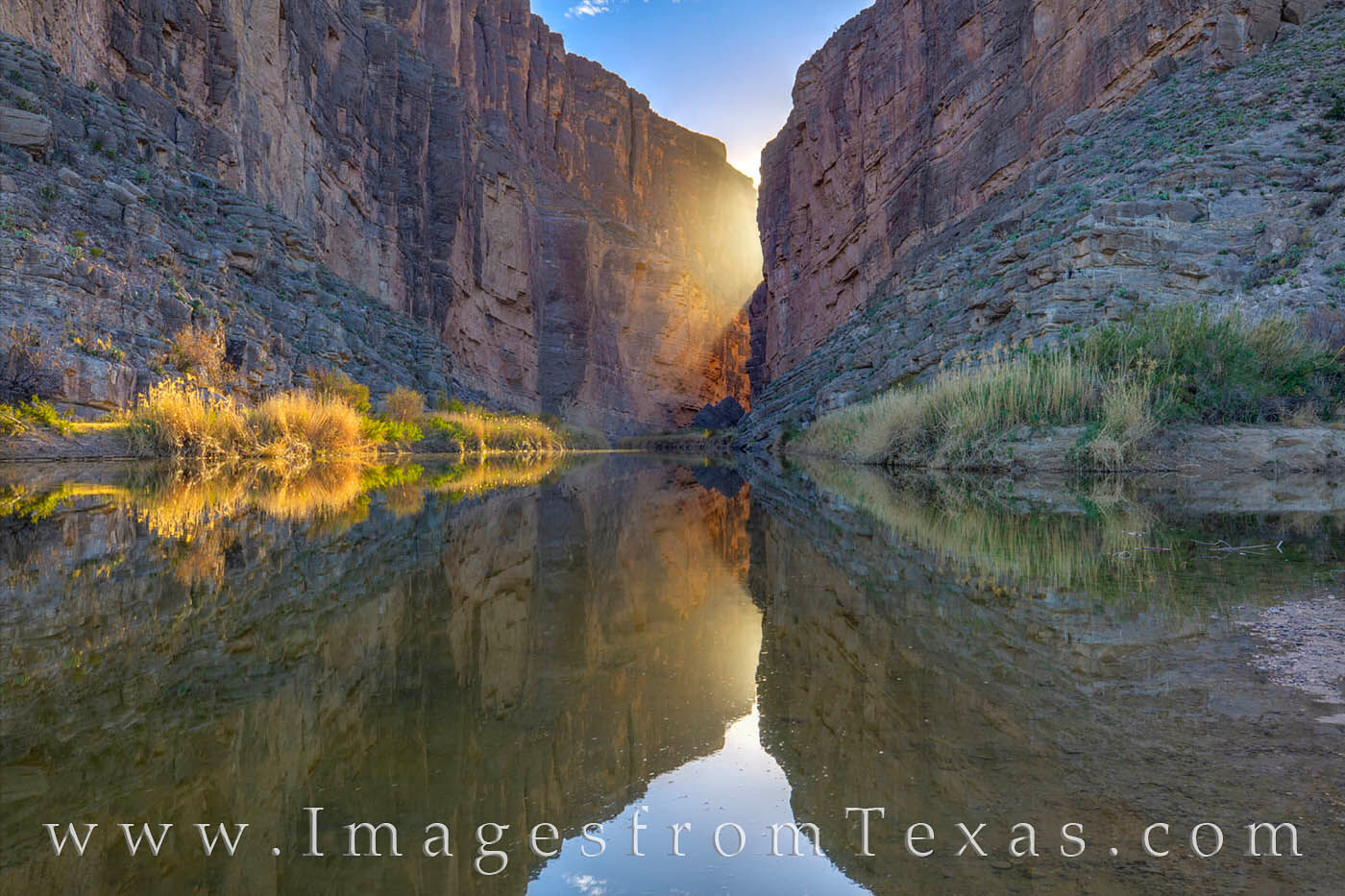
The last rays of sunshine peek through the steep canyon walls at Big Bend's iconic Santa Elena Canyon on a calm spring evening. The Rio Grande River flowed slowly and shined like a mirror, and on this night it offered a wonderful reflection.
***
The morning alarm sounded at 3am, though we were both already awake. I have to say It was nice experiencing this with a fellow professional photographer. These early mornings can be harsh for folks who don’t care about the best light (or dark skies for star gazing). By 3:15 we were on the road and roaring down Grapevine Hills Trail in, I assume, a cloud of dust (it was very dark!). I know many people think this road is bad, but I’d suggests driving Black Gap or some of the high mountain passes near Silverton and Ouray and Lake City, Colorado. There you gain perspective on what is bad and what is not-so-bad. We covered those 7+ miles in about 12 minutes. After parking, we donned the lit up the flashlights and strapped on the backpacks full of lenses, cameras, and even a star tracker to shoot long exposures of the Milky Way. An easy mile-and-a-quarter later, we were enjoying awe-inspiring views of the Milky Way from high above Balanced Rock.
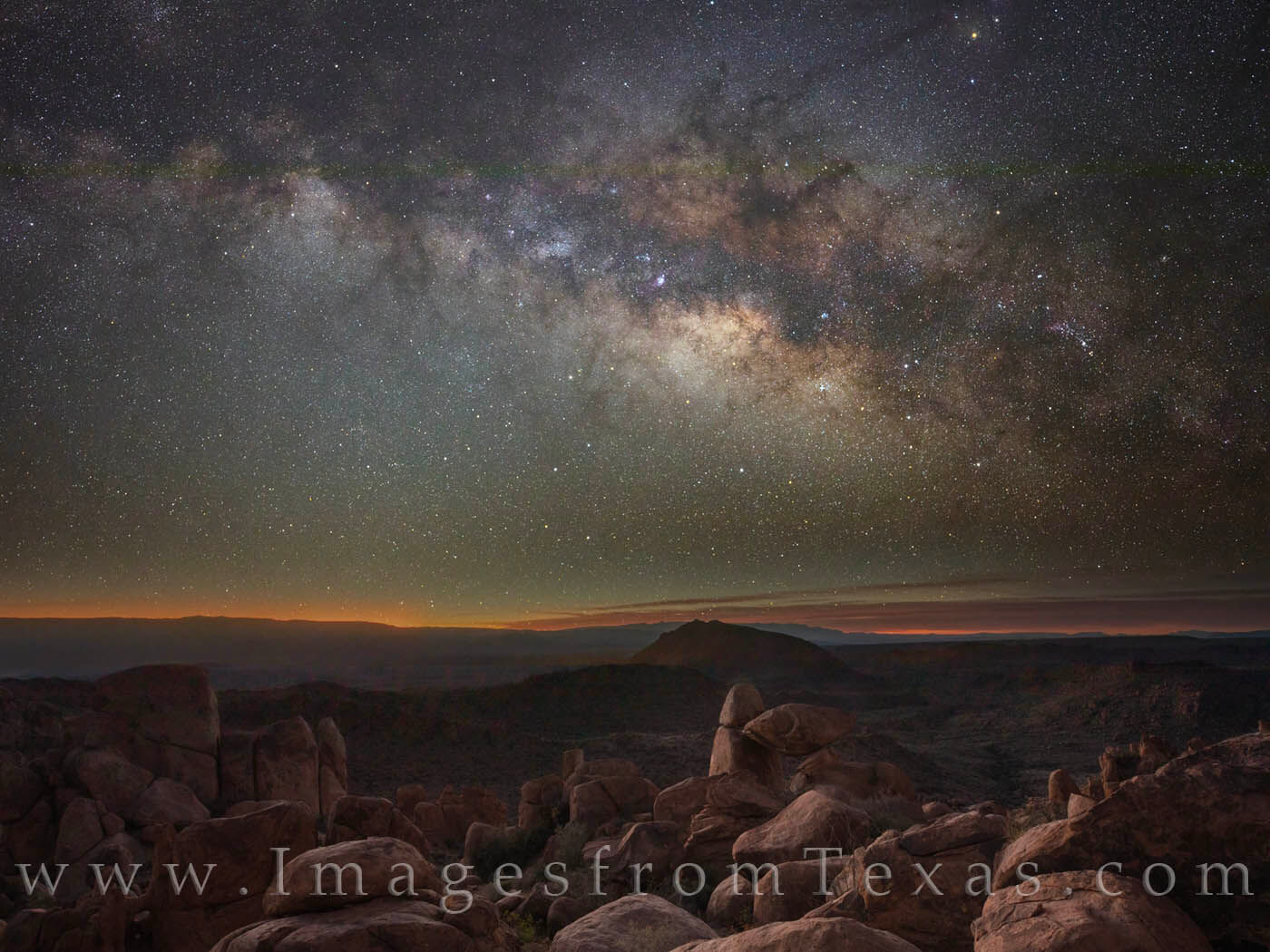
The morning started early with a 3:00am drive down Grapevine Hills Road, a bumpy dirt road heading north from the Chisos Mountains. After parking at the Balanced Rock trailhead, we made the easy walk to the iconic rock formation, then headed uphill further to obtain a clear view of both Balanced Rock and the distant horizon. I’d lugged along a star tracker, as well, and began the tedious task of setting it up, aligning it with the north star, focusing the stars, and shooting long exposures (up to three minutes each) of the Milky Way as it slowly rolled across the dark sky.
The image you see here is a composite. The Milky Way portion was taken between 4:30-5:30am. With sunrise ~ 7:00am, the foreground of the landscape was taken around 6:15am in another long exposure (several minutes) to allow for some definition to show up in the rocks. Back home, the two images were blended together to show what our eyes can see but the camera cannot capture in a single image.
In past blogs, I’ve written how I shoot the Milky Way, so I won’t belabor that point. But for the next few hours, the heart of our galaxy rolled across the heavens, slowly being replaced by an orange glow on the distant horizon that needs to be experienced rather than written about with mere words.
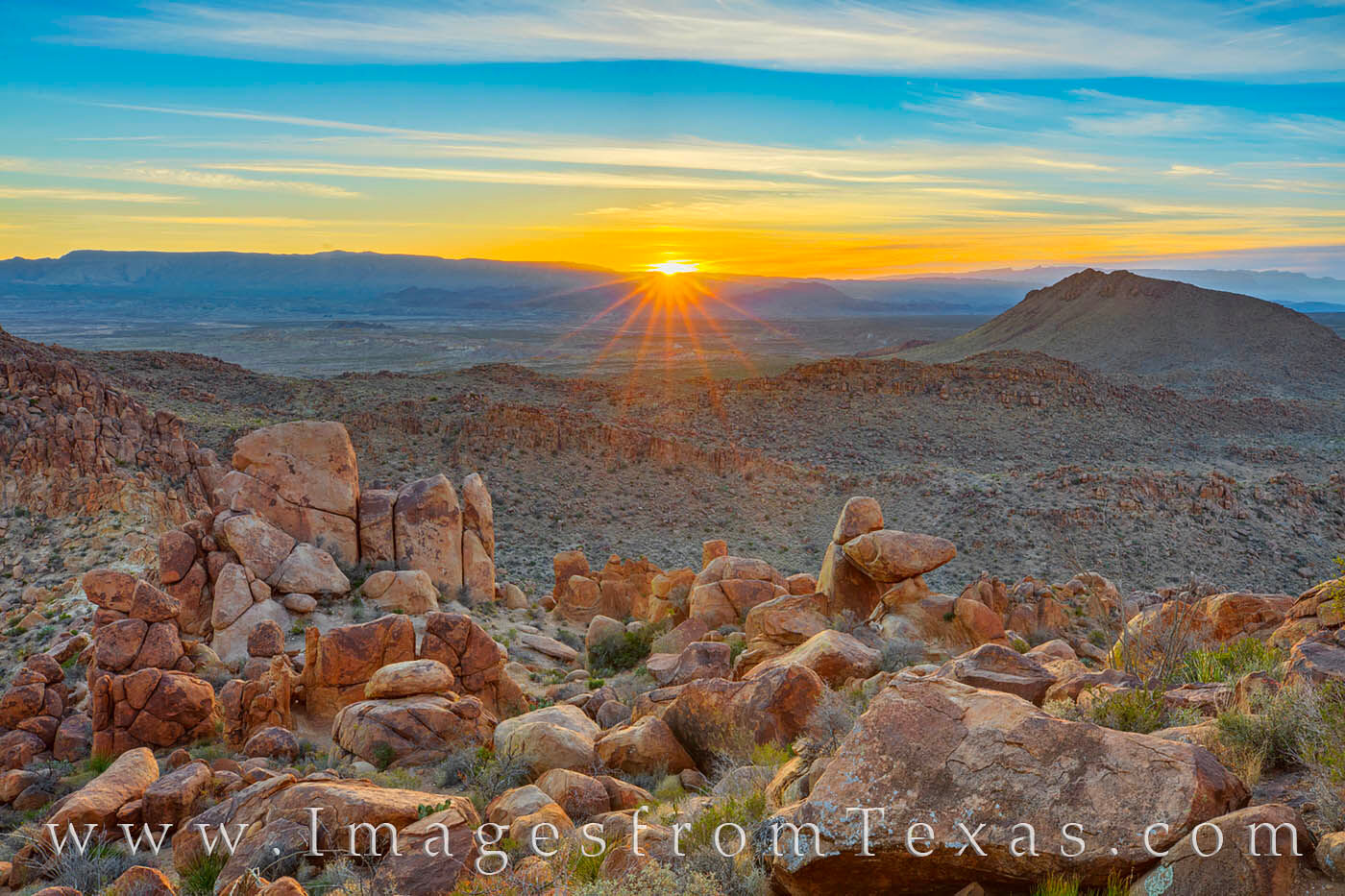
Sunrise over the Grapevine Hills and Balanced Rock is a beautiful experience. This portion of Big Bend NP is popular, but in the hour around sunrise, I've never seen anyone also around.
The sunrise provided a beautiful light show, and before long we were bumping back down the road towards our room. Back at the lodge, we took turns trying to nap, but sleep was elusive. After lunch, we regrouped and headed to the Indian Head Trail. This would be my first time to explore the area (the only new place for me on this trip).
Located east of Terlingua, the Indian Head trail starts outside Big Bend and crosses into the park boundary a short ways on the trail. I should add here for the hours we spent in this area at both sunset and sunrise, we never saw another person. This is a sacred area of some of the native Indian tribes who once inhabited the area. Ghosts are said to roam and mysterious happenings occur that can’t be explained. We experienced neither, but we did stumble across one of the area’s secrets – petroglyphs dating back from 4,500-8,000 years.
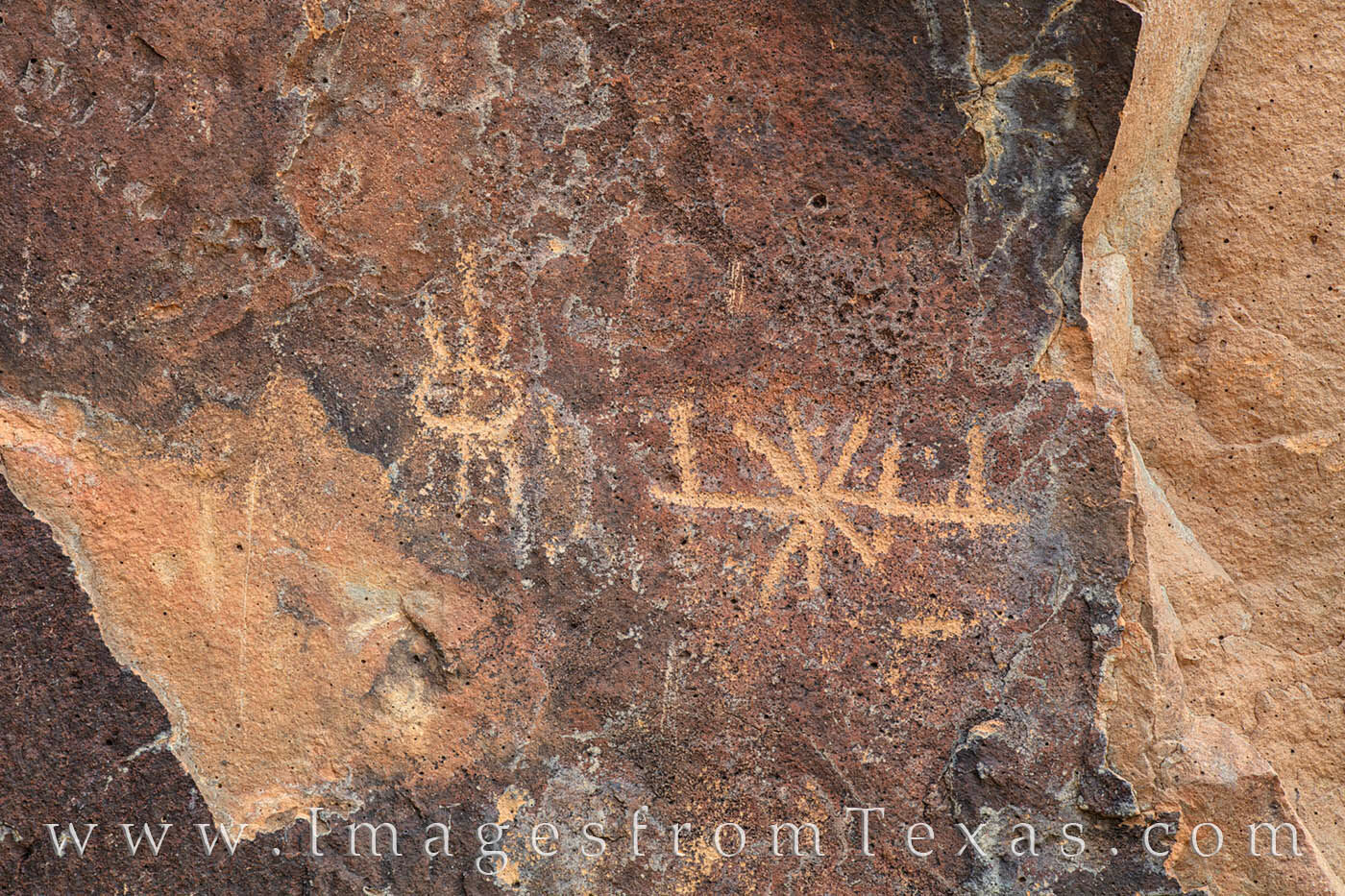
Along a remote trail in Big Bend National Park, a friend of mine and I happened upon a rare petroglyph. These ancient rock carvings are estimated to be between 4,500-8,000 years old.
The Indian Head Trail isn’t long – maybe 1.5 miles (I did not have my GPS on), and the path is littered with haphazard shapes of ancient volcanic rock. And after clouds all day and having almost given up on a colorful sky, the sun peeked through an opening on the horizon and lit up the rocks and sky from one end of the desert to the other. This would happen the next evening, as well, and was perhaps a gift from the local ghosts – or maybe God – for respecting the land.

From the remote Indian Head Trail in the far west of Big Bend National Park, sunset falls over a field of ancient boulders. This trail actually begins outside the park and crosses over the park boundary shortly after it gets started. I've never seen another person in this area in my visits here.
The next morning found us back on the same trail well before sunrise, which allowed for a few Milky Way photos, though more hurried than the previous morning. And sunrise did not disappoint.
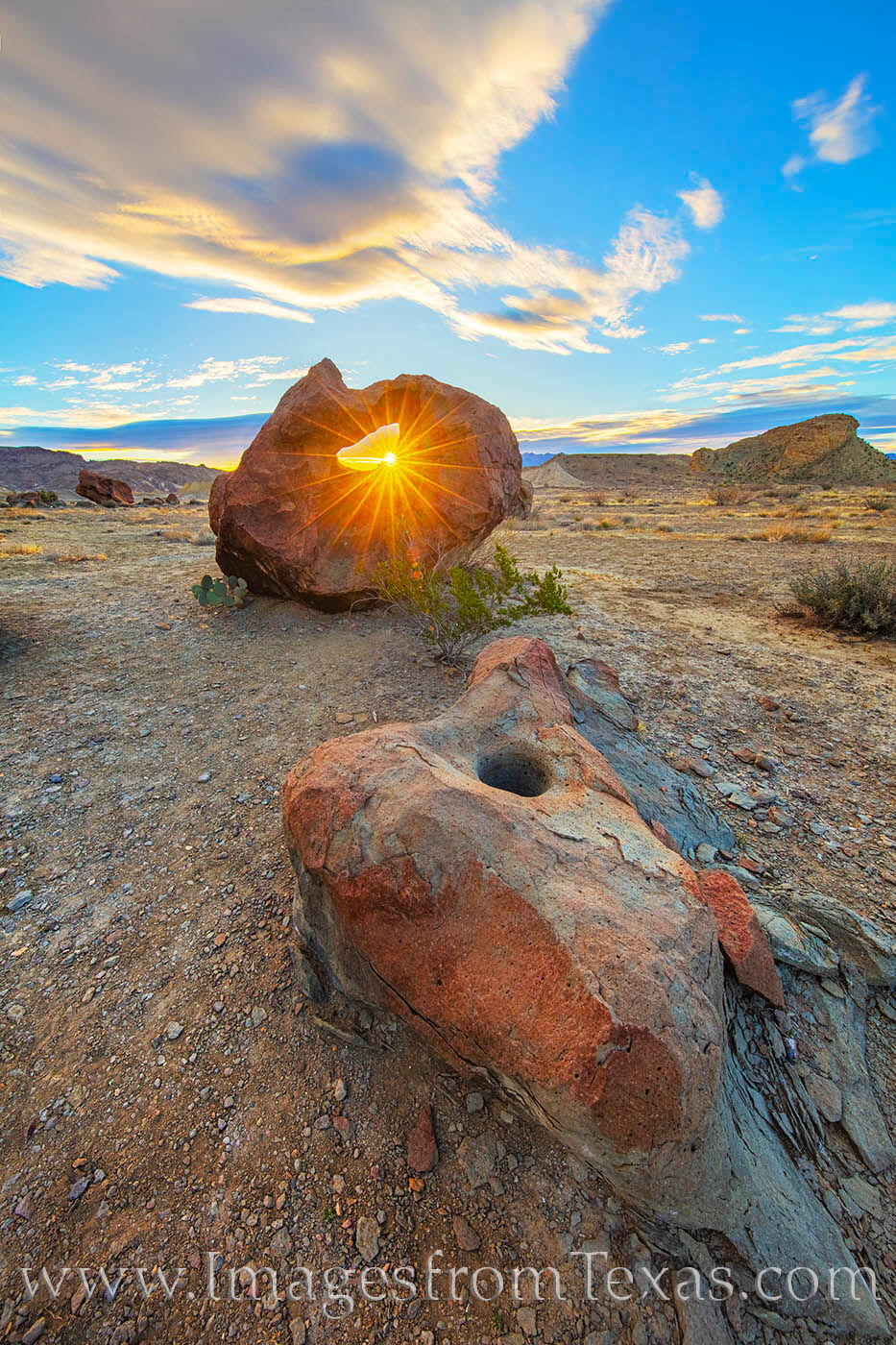
Sunrise in the remote regions of Big Bend National Park is both peaceful and beautiful. In this area said to be haunted by past Indian spirits, this rock formation known as "the donut" by locals makes for an interesting perspective and is a great place for exploring in the early morning and late evening.
After finishing up, we headed into Terlingua for a breakfast taco and a few quick photos of the most popular eatery in town, the Starlite Café. Unfortunately, it is only open from 5pm-10pm, and for us photographers, that is our work time!
For our last evening, I took Greg to the Tornillo Flats, an area of Big Bend’s version of hoodoos. These rocky and decaying rocks rise from a barren desert floor and are not quite the same as the hoodoos you’d find in the desert southwest, or even Palo Duro Canyon for that matter. Still, they are fun to explore. There is not trail here, so we parked along the main road in a pull-out and trekked across the arid land. Up and over and around piles of rock, we made our way west, coming across small blooming cacti every once in a while. The evening winds were swirling, and again, gray clouds consumed the sky. And after many photographs of hoodoos with overcast conditions, a small break on the distant horizon began to slowly glow, eventually taking over a good portion of the western sky. Amazingly, the light show lasted for nearly 15 minutes, and we enjoyed every minute of our time in these remote regions.
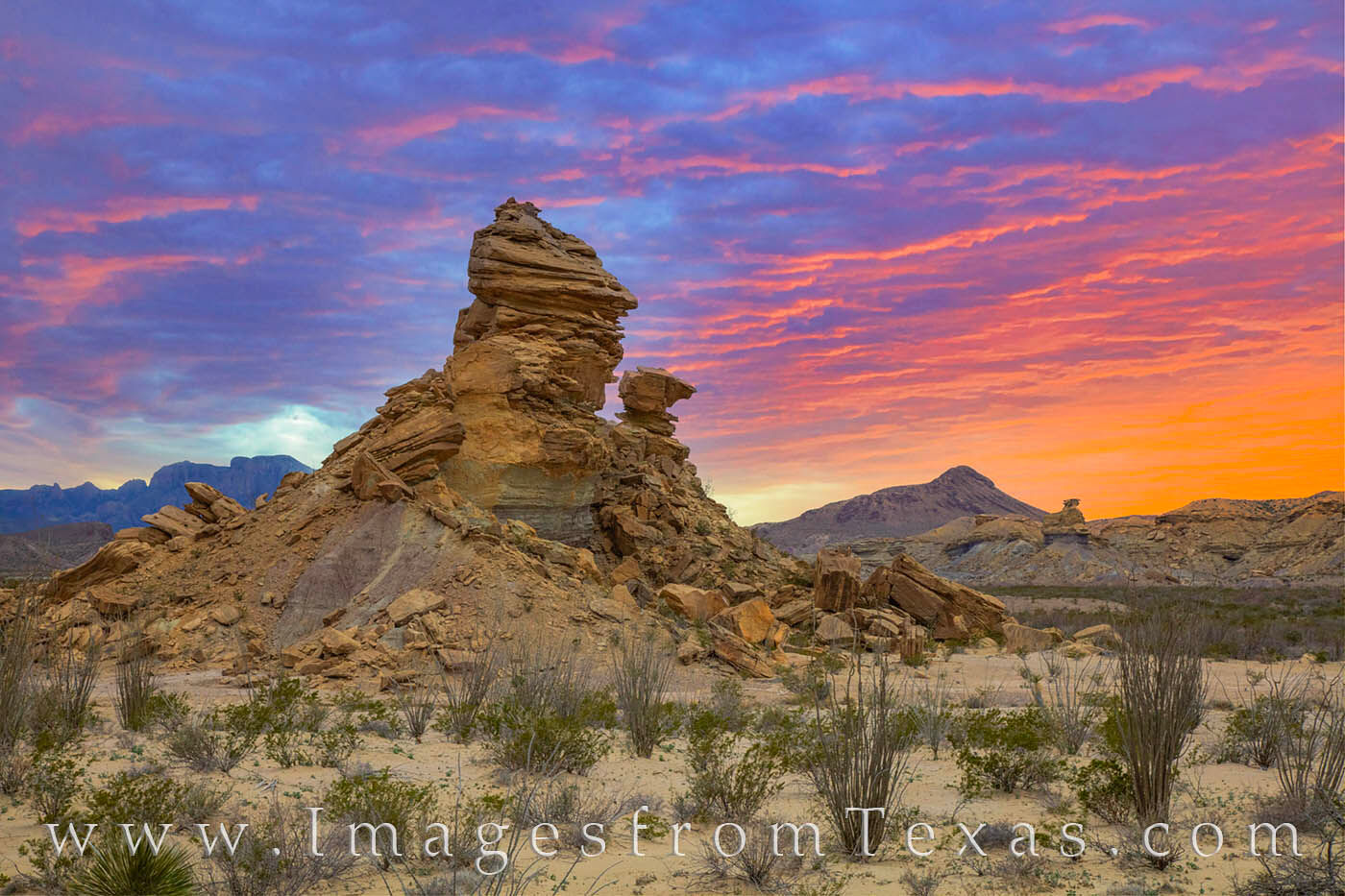
Rocky hoodoos near Tornillo Creek just north of Panther Junction rise into a stunning sunset sky. I hadn't much hope for color as it was cloudy all day, but just before the sun settled behind the distant mountains, a sliver of light came through and illuminated the entire horizon.
After a thirty-minute walk back to the truck, we pulled onto the road and no sooner did a mountain lion scamper across the road from the same area we’d just been. That was my first big cat sighting in BBNP!
The next morning, exhausted from the previous three days, we decided to shoot sunrise from up on Lone Mountain, a small peak just north of Panther Junction. Reluctant because of the howling winds, we made our way up the spine of the mountain before finally deciding to drop down the east side to escape the 40+mph winds. I stayed in one location for the next 30 minutes and ended up with one image – this small cactus at sunrise:

From Lone Mountain and the only image I took on this particularly windy moring, this (I think) is an Echinocereus stramineus (strawberry cactus) at sunrise. The plan was to hike up Lone Mountain, but with west winds at 40mph and gusts up to 60mph, I hung low on the east side to avoid as much as wind as possible. After the sun crested the distant peak, I scrambled back down the rocky, steep slope and called it a morning! Still, this is one of my favorite images from Big Bend NP.
And after that, I said adieu to Greg and started the long drive home. Sure, I’d spent more time than not at some familiar places, but I also experienced the wilds of Big Bend, witnessed ancient petroglyphs of long ago peoples, and had the amazing fortune to witness six very nice sunrises and sunsets in a row – something that doesn’t happen often for us photographers. I look forward to another visit out here soon. Next up… wildflower season!
Until then - safe travels, everyone.
~ Rob

Rocky hoodoos near Tornillo Creek just north of Panther Junction rise into a stunning sunset sky. I hadn't much hope for color as it was cloudy all day, but just before the sun settled behind the distant mountains, a sliver of light came through and illuminated the entire horizon.